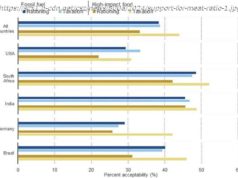Ford made some of the most iconic engines in automotive history. These engines are now retired, but hold a special place in our hearts.
Ford has made some truly remarkable engines since the company was founded in 1903, and its motors power everything from massive trucks to iconic muscle cars, and track-bound race cars to warplanes and tanks. While it’s hard to choose just five engines the U.S. automaker designed and made, we’re looking at five class-leading gasoline-powered engines that arguably outshone other contemporary engines across its history. Some were chosen for their reliability, and others for sheer performance or record-breaking specifications. These are engines that Ford no longer makes, but we wish it did still, even if only for the bragging rights of owning new versions of them.
Our wishlist of five Ford engines starts in the 1960s and goes up to the 2010s. It has the supercharged Trinity V8 engine that delivered a staggering 662 HP and was seen in the early 2010s Ford Shelby GT500; the much-lauded inline six Ford 300 engine that was used in various forms for over 30 years; the SHO Taurus V6, a high-performance version of a family car engine that rivaled those found in muscle cars of the time; one of the largest V8 engines ever produced by Ford — the 8.7-liter Super Duty V8, and finally, the FE series 427 V8, which had a stellar NASCAR career and won all three podiums at the 1966 Le Mans.5.8-liter Supercharged Trinity V8 Engine
Designed for the 2013 Ford Shelby GT500 and also available in the 2014 version, the supercharged 5.8-liter Trinity V8 engine was, at the time, one of the most powerful production V8 engines in the world, producing 662 horsepower at 6,500 rpm. It also delivered 631 lb-ft of torque at 4,000 rpm. Featured on SlashGear’s 10 most powerful Ford engines list, it was developed by Ford’s Special Vehicle Team (SVT) and was coupled with a 2.3-liter Eaton TVS supercharger, capable of supplying up to 14 psi of boost — up from 9 psi of the previous generation. The 2013 Shelby GT500 was capable of going from 0 to 60 mph in 3.5 seconds, finishing a quarter mile in 11.6 seconds, and a claimed top speed that exceeded 200 mph.
Though it shared parts from both the Coyote and Triton engines, the 5.8-liter Trinity V8 was a massive upgrade over the supercharged 5.4-liter V8 engine seen in the 2011 and 2012 Shelby GT500, which put out 550 horsepower and 510 lb-ft of torque. Among the upgrades on the Trinity V8 were an over-rev feature that allowed the engine to redline up from the regular 6,250 rpm to 7,000 rpm for up to eight seconds, a larger oil pump, new cylinder heads with better coolant flow, an aluminum sump, a five-layer MLS headgasket, Ford GT camshafts, piston-cooling oil jets (the same as the Coyote), as well as an improved compression ratio (from 8.5:1 to 9.






